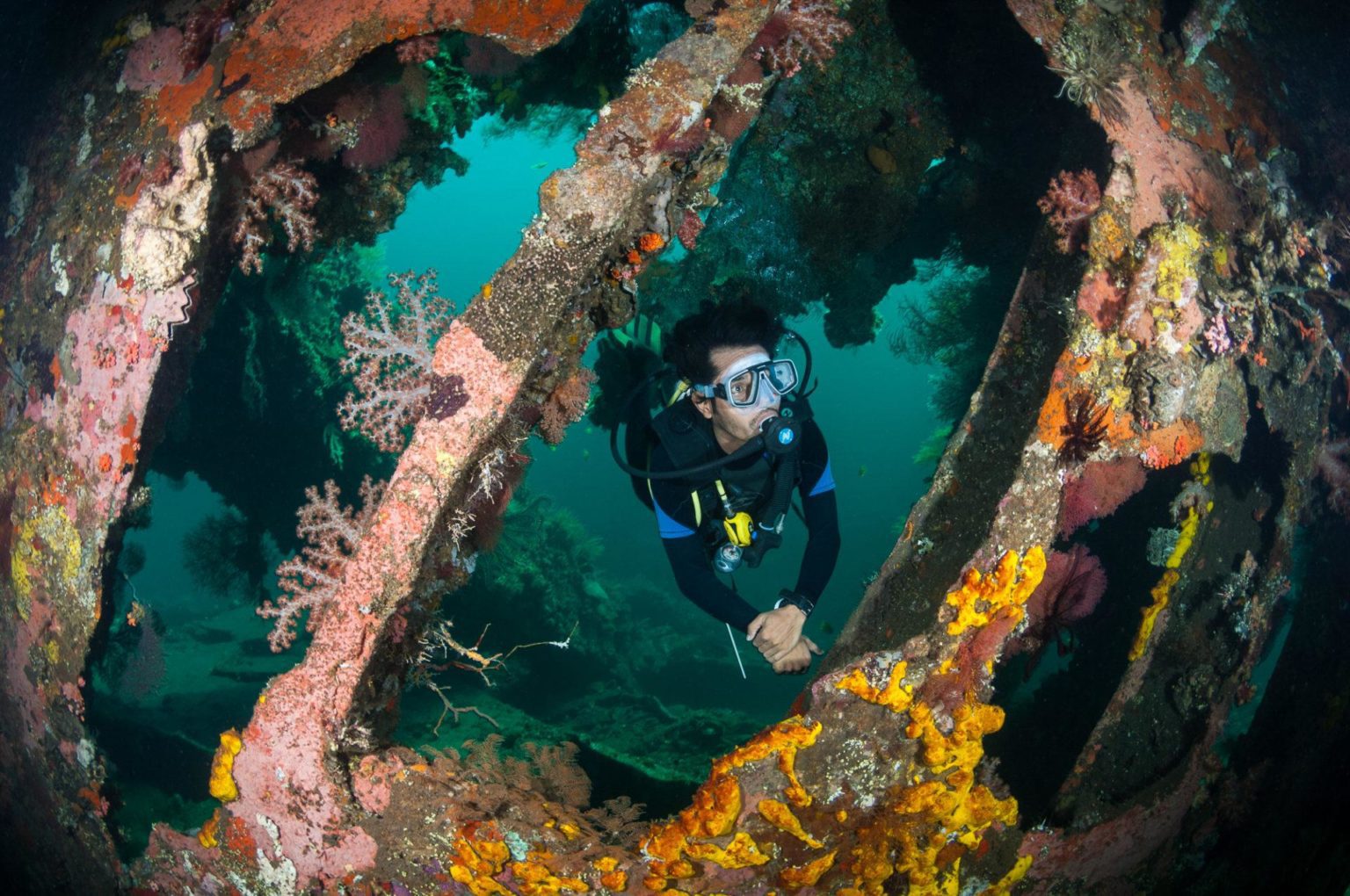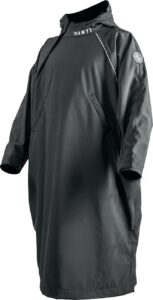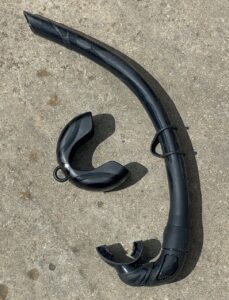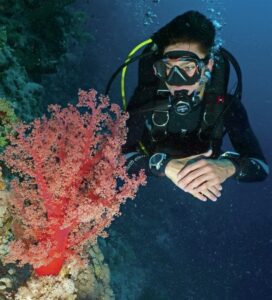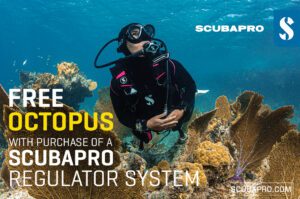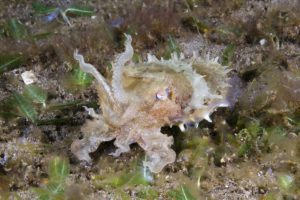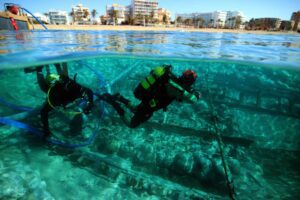Muck diving was first described by dive pioneer Bob Halstead when scuba diving Papua New Guinea. Little did he know how popular this type of diving would become, especially with underwater photographers.
It has become increasingly popular in recent years and rightly so. It involves diving sites with sandy or silty bottoms, in search of the weird and wonderful critters found there. It’s a great type of diving for fans of macro photography, who also have the patience and keen eyesight to search small areas for critters. Muck diving is a great way to improve dive observation and buoyancy skills whilst searching for hidden critters.
Some of the best places for muck diving are volcanic areas and seagrass beds, with top destinations including Indonesia, Papua New Guinea, the Philippines and Malaysia. Sitting within the Coral Triangle, these destinations contain more species of fish, invertebrates, and coral than anywhere else in the world.
The best way to explore these different regions, and their more remote dive sites, is by liveaboard diving. There are a variety of liveaboards to choose from in Indonesia, the Philippines and Papua New Guinea. Divers should be aware that liveaboard vessels operating in Malaysia are limited. The Celebes Explorer liveaboard is one of the only vessels operating in Malaysia and offers year-round safaris.
Here are our top muck dive destinations to explore:
Indonesia
Lembeh Strait divides Lembeh and Sulawesi and is considered the ‘Muck diving capital of the world’, with around 35 dive sites to explore. Lembeh Strait liveaboard diving is perfect for macro photographers, with the black sands of the area reducing glare, and there are a wide variety of critters to enjoy. Nudibranchs, stargazers, Mandarinfish, hairy and clown frogfish, and ghost pipefish are just a few of the many critters found in the strait. The Mawali Wreck, Hairball, Nudi Falls and Angel’s Window dives are top dive sites to visit. There are also two World War II wrecks to explore; the Bimoli and Mawali.
Alor’s Biangabang beach has black volcanic sands and is home to sea moths, mantis shrimps and frogfish. It is a great area for night diving and Alor liveaboard diving safaris also often double up as whale and dolphin watching tours.
Ambon is equally as well-known as Lembeh Strait and is Ambon liveaboard diving is worth experiencing for the Ambon Scorpionfish and Halimeda ghost pipefish. Keen eyes are needed to spot this ghost pipefish, as it imitates a small circular algae species. Other highlights of the area include Orange-Painted frogfish, numerous moray eels, and Mandarinfish.
Philippines
Dauin, in the Visayas region of the Philippines, is the main muck diving site in the area. The sandy slopes host pipefish, seahorses, sea moths, stonefish, and other critters. The surrounding areas of Negros and the Apo Island Marine Sanctuary have a variety of coral reefs, wall dives, and World War II wrecks to explore.
Dauin’s artificial reefs, made up of car wrecks and concrete blocks, are home to cuttlefish, octopus and frogfish. The nearby sandy bottoms are also worth exploring for Blue-ringed octopus, Mimic octopus and Wonderpus. The beautiful Philippine Siren offers Dauin liveaboard diving.
Puerto Galera is a well-known muck diving area with Hairy frogfish, Thorny seahorses, flying gurnards, Bobbitt worms, Mimic octopus and Wonderpus. Night diving there is ideal for watching the critters hunting behaviour.
Pescador Island, at Moalboal, is also a good area for night diving and hosts crabs, nudibranchs, cuttlefish and eels.
A variety of Philippines liveaboards visit these unique destinations.
Papua New Guinea
Located at the south-eastern tip of Papua New Guinea’s mainland, Dinah’s Beach of Milne Bay is where muck diving began in the 1980s. The coastline and surrounding islands offer a variety of black sand muck and coral dive sites and the opportunity to enjoy tiny critters alongside manta rays, whale sharks and large pelagic fish.
Milne Bay liveaboard diving takes divers to this premier muck diving area to experience numerous dive sites and critters such as octopi, shrimps, nudibranchs (including Spanish Dancers), snake eels, stargazers, and Mandarinfish. Dinah’s Beach is a great dive site for frogfish, octopi, batfish and scorpionfish. Deacon’s Reef coral pinnacles provide stunning photographic opportunities and corals hiding many invertebrates. Observation Point is another photographic highlight; with seagrass, mangroves and seahorses.
Those looking for mantas should visit Wahoo Point.
Kimbe Bay has a black sand dive site at Wire Bay, where divers can enjoy Leaf Scorpionfish, nudibranchs and shrimps. Kimbe Bay is also good for larger life such as barracuda, sharks, and Napolean Wrasse. Kimbe Bay liveaboards explore this diving mecca with some 200 reef and dive sites.
Malaysia
Mabul and Kapalai lie close to world-famous Sipadan Island and offer sandy, shallow reefs home to Mandarinfish, ribbon eels and frogfish. They are muck diving hotspots and are just a 20-minute boat ride from Sipadan’s marine life, including Green and Hawksbill turtles and visiting hammerhead sharks. There are fewer liveaboard vessels
Froggy Lair in Mabul lives up to its name and is known for numerous frogfish, as well as cuttlefish and ghost pipefish. A rare crocodilefish species makes its home at Crocodile Avenue dive site, alongside snake eels, frogfish, mantis shrimps and octopi.
The Celebes Explorer Malaysia liveaboard allow divers to visit some of these amazing areas.
This article first appeared in Deeper Blue
